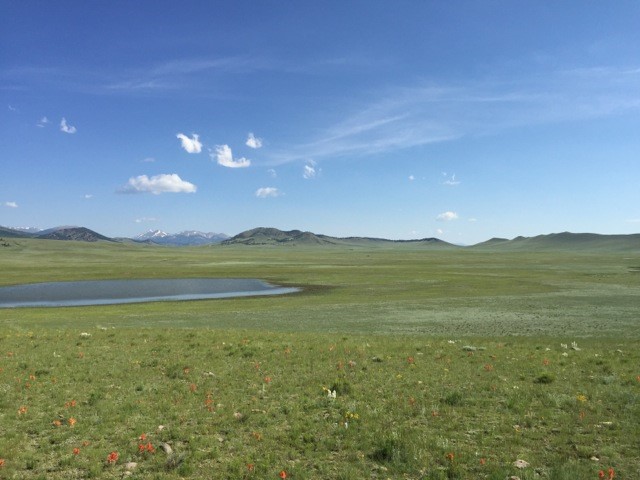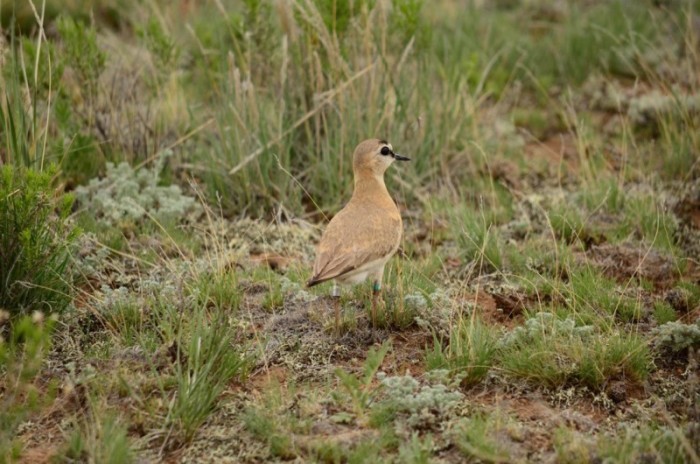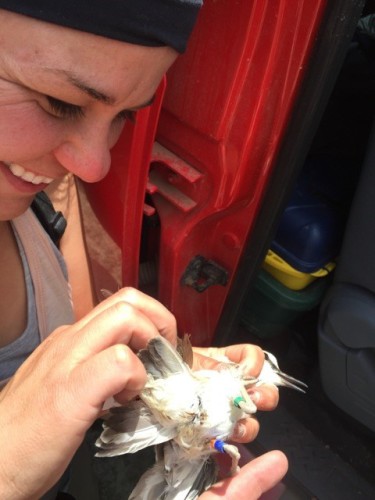Mountain ranges with peaks reaching 14,000 feet elevation surround the expansive short grass prairie of South Park, Colorado. At an average elevation of 9,000 feet, the prairie supports a comparatively large and curious breeding population of Mountain Plovers. Nesting areas are covered in snow through April, so nest initiation begins in May when nests are hatching in lower elevation breeding areas in eastern Colorado, Montana, Nebraska, and Wyoming.
With such a delayed breeding schedule, it is a wonder Mountain Plovers come to South Park at all. We don’t know how plovers in South Park alter their annual phenology. Do they delay migratory departures from wintering areas? Do they use extended stopovers in spring to delay migratory arrival for breeding? Or do they take different migratory routes from their counterparts that breed on the western edge of the Great Plains?
No one has studied this population since 2006; the last year plovers were banded here. At the time, it was not possible to track migration in plovers as satellite and GPS tags were not yet light enough for a 100g bird to carry in flight. Color bands and stable isotopes allowed insights in patterns of migratory connectivity (they could connect summer and winter locations for individual birds); tracking migratory routes would have required extensive and expensive flight time chasing radio frequencies from low output radio telemetry tags.
The Department of Integrative Biology at the University of Colorado Denver is very excited to partner with Pete Marra from the Smithsonian Migratory Bird Center and ConocoPhillips, as part of the Migratory Connectivity Project, to resume our studies of plover migration, this time with new and improved technology. In July, we attached GPS loggers to 15 plovers in South Park. These 2g tags are programmed to collect and log a GPS location about every 5 days from August 2015 until May 2016. Then, when the birds return next summer, we will remove the tags and retrieve the data. Any doubts of recovering the GPS loggers next year were assuaged after two plovers were re-sighted just a few miles from where they were originally banded over 10 years ago!








